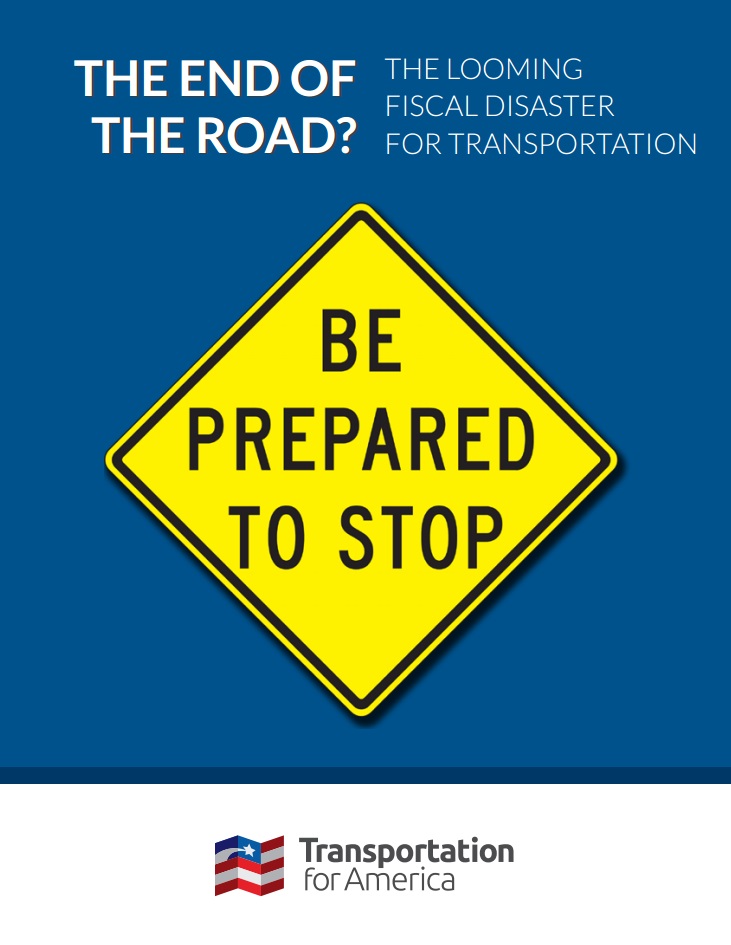State departments of transportation are growing concerned about the Highway Trust Fund’s pending insolvency. So what does this mean for communities across Connecticut, New Jersey and downstate New York?
According to Transportation for America’s (T4) recent report, The End of the Road? The Looming Fiscal Disaster for Transportation, New York, New Jersey and Connecticut collectively stand to lose over $5 billion in federal highway and transit funding in fiscal year 2015 if Congress doesn’t act to add new revenue to the Highway Trust Fund’s highway and mass transit accounts. Of this amount, the downstate region’s urbanized areas – the corridor stretching from eastern Connecticut to southern New Jersey stands to lose over $2 billion.
 T4’s calculations (broken out by state and by urbanized areas with populations over 200,000) assume that federal funding levels in fiscal year 2015 would remain the same as fiscal year 2014. In fiscal year 2014, communities across the country received almost $47 billion in federal funding for highway and transit projects. However, with gas tax receipts only able to cover already-promised commitments, this means that in fiscal year 2015, states, regions and transit agencies would find themselves short nearly $47 billion for new transportation projects. States sometimes supplement federal funds with state, local or private dollars for transportation projects, but the analysis makes clear that, historically,“federal funds account for the lion’s share of almost any major project in the country.” From 2001-2012, T4 found that federal dollars comprised 71.3 percent of Connecticut’s state capital transportation budgets, 44.1 percent of New York’s and 35 percent of New Jersey’s.
T4’s calculations (broken out by state and by urbanized areas with populations over 200,000) assume that federal funding levels in fiscal year 2015 would remain the same as fiscal year 2014. In fiscal year 2014, communities across the country received almost $47 billion in federal funding for highway and transit projects. However, with gas tax receipts only able to cover already-promised commitments, this means that in fiscal year 2015, states, regions and transit agencies would find themselves short nearly $47 billion for new transportation projects. States sometimes supplement federal funds with state, local or private dollars for transportation projects, but the analysis makes clear that, historically,“federal funds account for the lion’s share of almost any major project in the country.” From 2001-2012, T4 found that federal dollars comprised 71.3 percent of Connecticut’s state capital transportation budgets, 44.1 percent of New York’s and 35 percent of New Jersey’s.
The report comes not only as MAP-21 approaches expiration and the Senate readies its transportation bill, but also on the heels of the Obama administration’s release of its own bill: the GROW AMERICA Act. GROW AMERICA is a four-year, $302 billion reauthorization proposal that serves as “a blueprint of the administration’s vision and a menu of options that, in an ideal scenario, Congress would pick and choose from in crafting the bill.” As Politico notes, “the proposal includes $199 billion for highways and road safety and $72 billion for transit and to ‘expand transportation options.’” In addition, “Other pots of money include $19 billion dedicated to rail, a $10 billion multi-modal freight program, $5 billion for the TIGER grant program and $4 billion for TIFIA.”
Transportation and smart growth advocates have identified some good things about the bill: its multi-modal approach that replaces the traditionally road-focused one; establishing TIGER as a permanent program; and creating a new competitive grant program.
However, while the President’s budget called for a one-time shot of $150 billion from “pro-growth business tax reform,” the bill doesn’t offer specifics on how to fund transportation projects in the short or long-term. In other words, after this $150 billion is spent, the nation would still have to search for more funds for transportation.

[…] Reauthorization proposal, which was unanimously approved within just a few days. The other proposal is the GROW AMERICA Act, which the White House released in late April. As MAP-21 nears […]
Since none of the proposed activities make anything we can manufacture and sale there is no real growth! Short term construction jobs are not the answer!It is all downhill until we start making the products we consume.